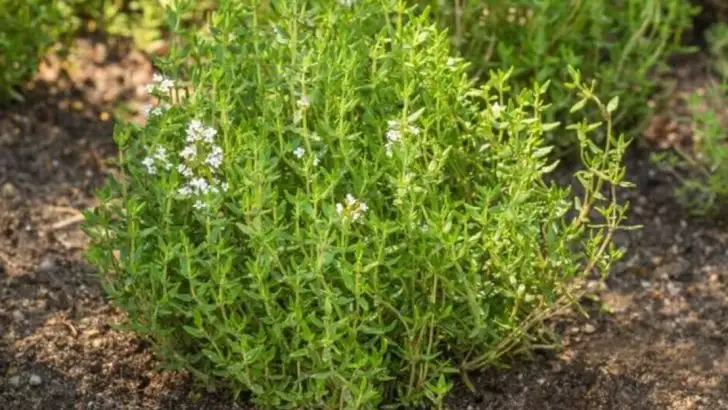Tired of dragging out the hose or constantly checking soil moisture? You’re not alone. If you’re looking for a low-maintenance garden, the solution might be as simple as choosing the right plants. Some species are naturally adapted to thrive with minimal watering, relying entirely on natural rainfall to meet their needs.
In this list, we’ll explore 19 tough, drought-tolerant plants that are perfect for gardeners who prefer to let nature do the watering. From vibrant flowers to resilient shrubs and groundcovers, these plants are ideal for busy schedules, dry climates, or eco-conscious landscapes.
Whether you’re building a sustainable garden or just want to spend less time with a watering can, these rain-reliant plants offer beauty without the fuss.
Lavender

Lavender is renowned for its fragrant blooms and silvery foliage. Once established, this Mediterranean marvel thrives on minimal watering. Its essential oils are popular in aromatherapy and herbal remedies. Plant it in well-drained soil, and let nature take the watering role. Lavender’s ability to withstand drought makes it perfect for xeriscaping. Its blooms attract pollinators, adding life to your garden. The scent not only soothes but also repels pests, making it both beautiful and functional.
Sedum
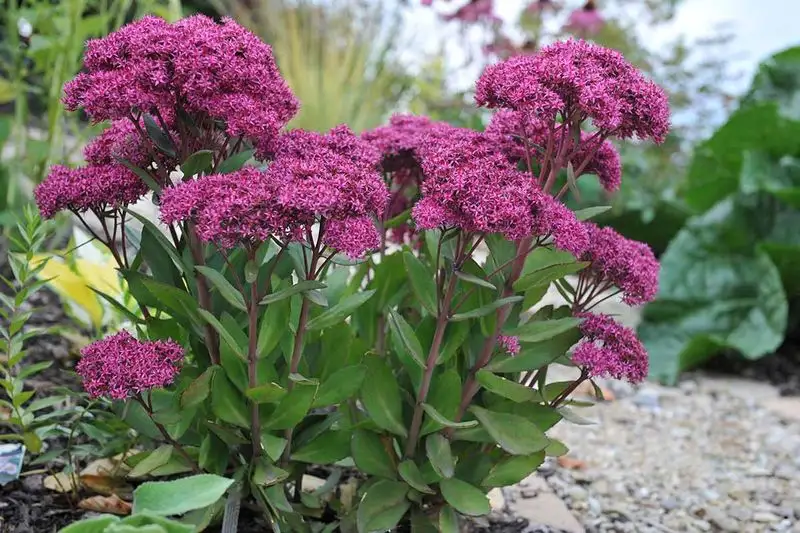
Sedums, or stonecrops, are succulents that thrive in dry, rocky environments. With fleshy leaves storing water, they require little maintenance. These plants come in various shapes and colors, from ground covers to tall varieties, making them versatile additions. Sedums also attract butterflies, enhancing your garden’s ecosystem. Their resilience is unmatched, tolerating poor soil and drought conditions. Perfect for rock gardens or borders, sedums add texture and color without the need for frequent watering.
Russian Sage
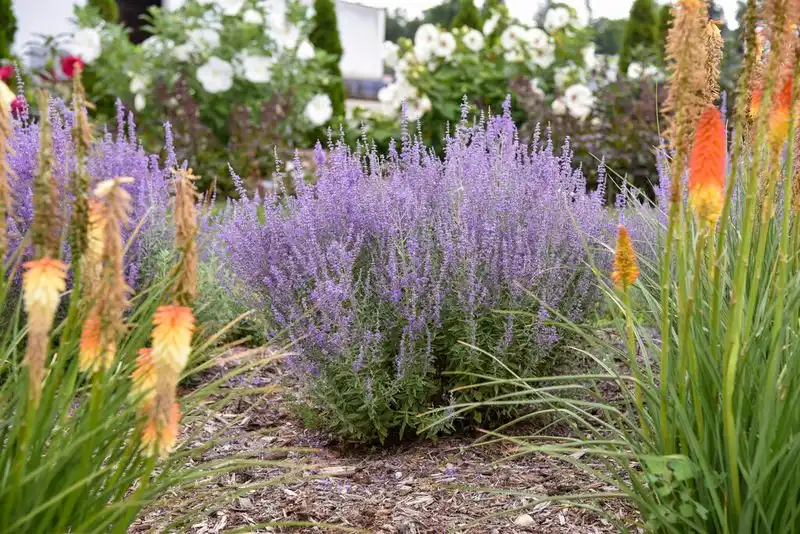
Russian Sage is a hardy perennial known for its long-lasting purple blooms and aromatic foliage. This plant thrives in full sun and poor soil, requiring minimal water once established. Its towering, airy stems create a striking presence, perfect for adding height and texture. Russian Sage is deer-resistant and attracts pollinators like bees and butterflies. Its drought tolerance makes it an ideal choice for gardeners looking to save water while maintaining vibrant displays throughout summer and fall.
Yarrow
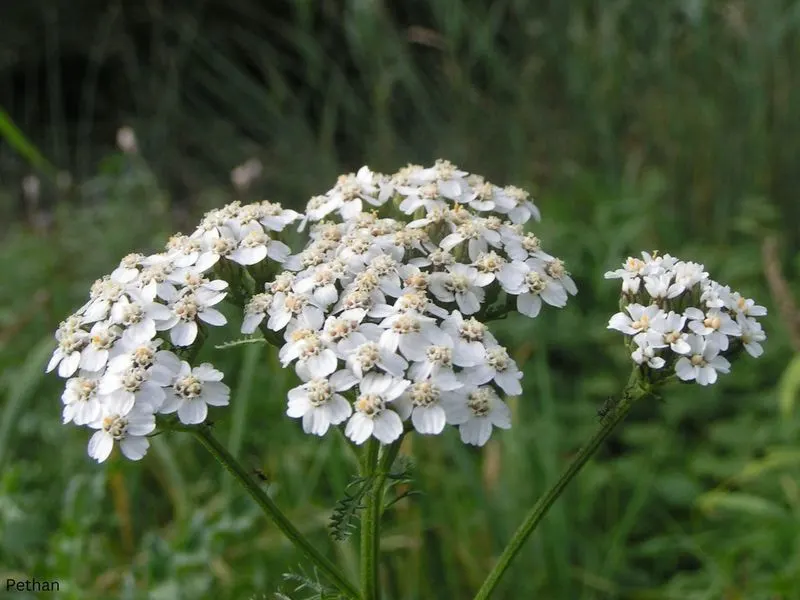
Yarrow is a versatile perennial with feathery foliage and clusters of tiny flowers. Known for its medicinal properties, yarrow is also a favorite among low-maintenance gardeners. Its deep roots allow it to find moisture even in dry conditions. Plant yarrow in sunny spots, and enjoy blooms that attract beneficial insects. This plant’s hardy nature makes it a staple in sustainable gardening, requiring little attention while offering vibrant colors from spring to fall.
Thyme
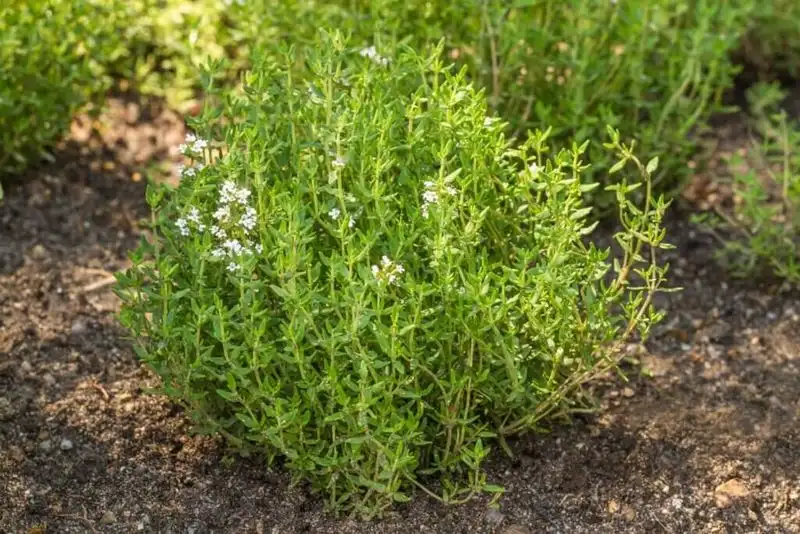
Thyme is more than just a culinary herb; it’s a robust ground cover that thrives on neglect. Adapted to dry, sunny habitats, it requires minimal watering. Thyme’s small, aromatic leaves are perfect for seasoning dishes, and its flowers attract bees. Planting thyme in well-drained soil ensures healthy growth. This herb’s resilience and versatility make it an excellent choice for rock gardens or as a fragrant border plant.
Rosemary
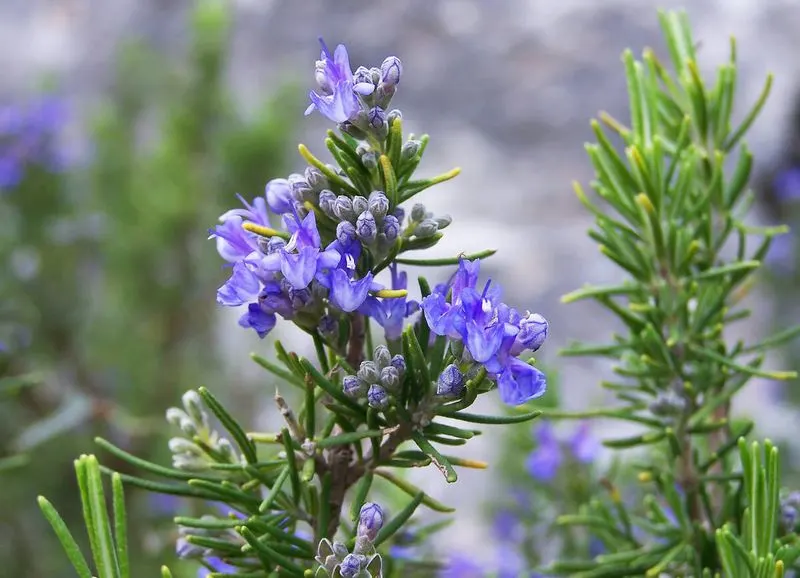
Rosemary is a Mediterranean native that loves full sun and well-drained soil. This aromatic shrub is drought-tolerant, thriving on rain alone once established. Its needle-like leaves and purple flowers are both ornamental and practical, offering culinary uses and drought resistance. Rosemary’s scent repels pests, making it a valuable addition to any garden. Its evergreen nature provides year-round interest, and it can be shaped into hedges or left to grow naturally.
Coneflower
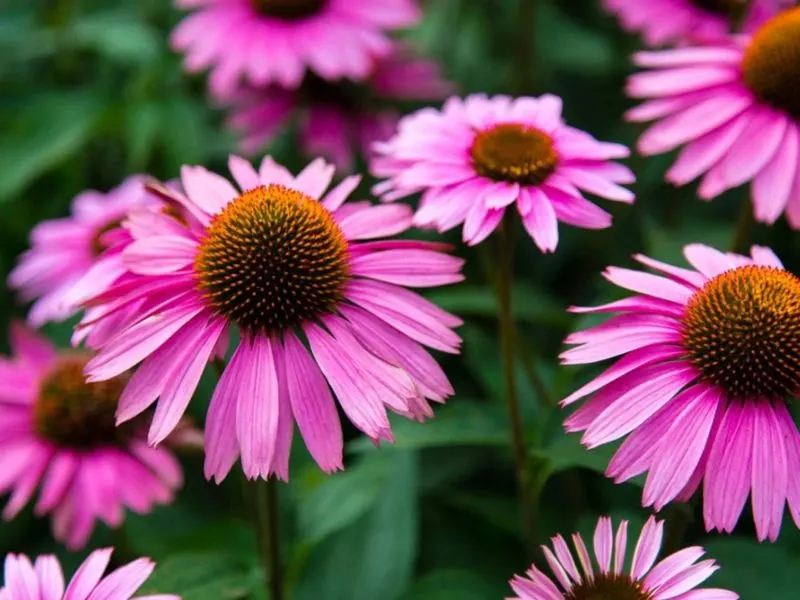
Coneflowers, or Echinacea, are hardy perennials that brighten any garden with vibrant blooms. These plants are drought-tolerant and thrive on neglect once established. Found in various colors, coneflowers attract pollinators like bees and butterflies. Their tall, sturdy stems make them excellent for cut flowers. Plant coneflowers in sunny locations to enjoy summer blooms that require little watering. Their resilience and beauty make them a favorite among gardeners who prefer low-maintenance landscapes.
Daylily
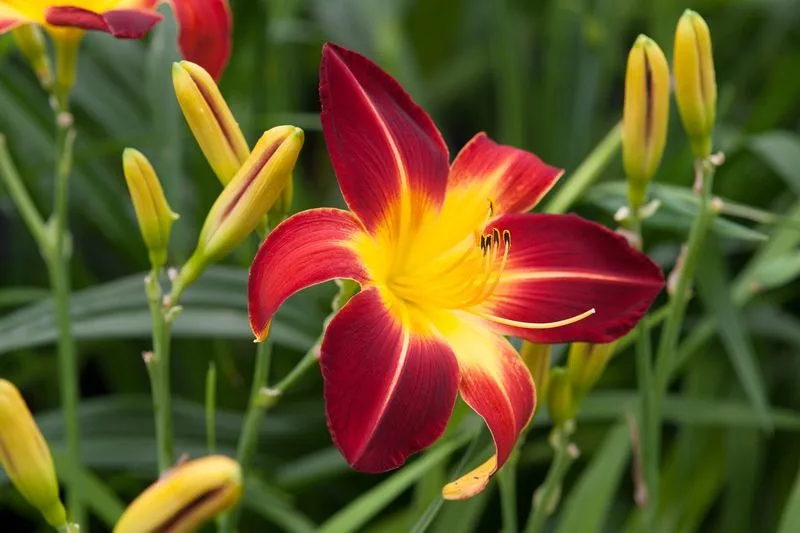
Daylilies are known for their stunning, trumpet-shaped flowers. This perennial thrives in various conditions, requiring little water once established. Each bloom lasts a day, but continuous flowering ensures a lasting display. Daylilies come in a palette of colors, adding diversity to gardens. These hardy plants are perfect for borders, adapting to both sunny and partially shaded areas. Their low maintenance nature makes them a go-to choice for gardeners seeking beauty without the hassle of constant care.
Agave

Agave plants are not just for tequila; they are striking succulents perfect for dry climates. With their rosette form and spiky leaves, agaves make bold statements in gardens. They require minimal watering, thriving on rain alone. Agave’s architectural beauty pairs well with gravel or rocky landscapes. These plants are also easy to care for, needing little pruning or attention. Their drought resistance makes them ideal for xeriscaping, offering a stunning visual impact with minimal maintenance.
California Poppy

California poppies are vibrant annuals that thrive in poor, dry soils. Known for their bright orange blooms, these flowers add a splash of color with little effort. They require minimal watering, often thriving on natural rainfall. California poppies reseed themselves, ensuring a continuous display year after year. Their carefree nature makes them ideal for wildflower meadows or borders. Plant them in full sun to enjoy an effortless burst of color throughout the growing season.
Bougainvillea
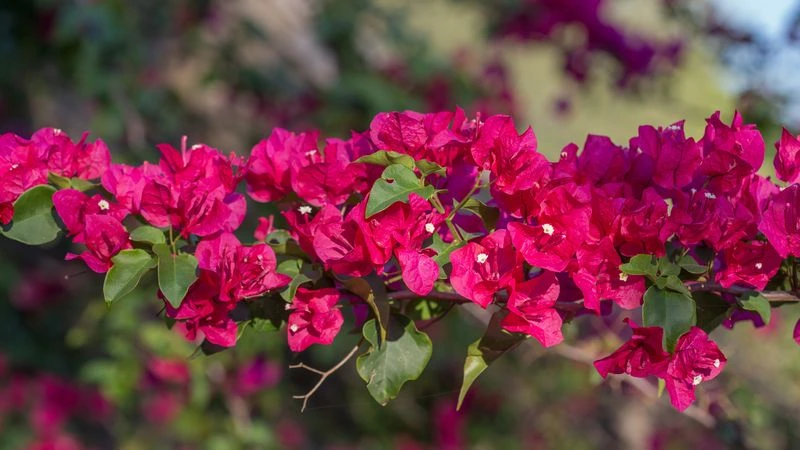
Bougainvillea is a showstopper with its vivid bracts that mimic flowers. Originating from South America, this vine thrives in sunny, dry conditions. Once established, bougainvillea is drought-tolerant, requiring little more than occasional rainfall. This plant’s cascading habit makes it ideal for arbors or trellises, adding dramatic flair to any landscape. Bougainvillea’s resilience and minimal water needs make it perfect for warm climates, providing a stunning display with very little upkeep.
Catmint

Catmint, or Nepeta, is a hardy perennial prized for its aromatic foliage and delicate flowers. Thriving in sunny, dry spots, catmint requires little watering once established. Its soft, silvery leaves and purple blooms attract bees and butterflies, enhancing garden biodiversity. Catmint is ideal for borders or as a ground cover, offering long-lasting color and fragrance. Its carefree nature makes it a must-have for low-maintenance gardens, adding beauty and life with minimal effort.
Euphorbia
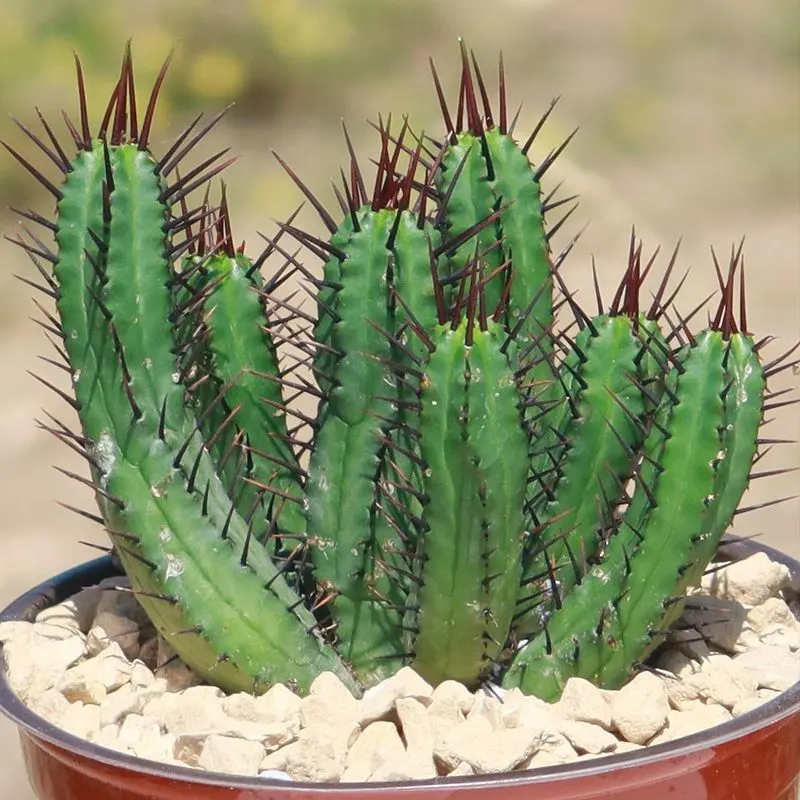
Euphorbias are diverse plants known for their unique flower structures and vibrant colors. These drought-tolerant beauties thrive in full sun, requiring little more than occasional rain. Euphorbias add architectural interest to gardens with their varied forms, from ground covers to shrubs. They are perfect for rock gardens or sunny borders, offering long-lasting color and texture. The milky sap is a defense against pests, making euphorbias both beautiful and practical.
Ice Plant
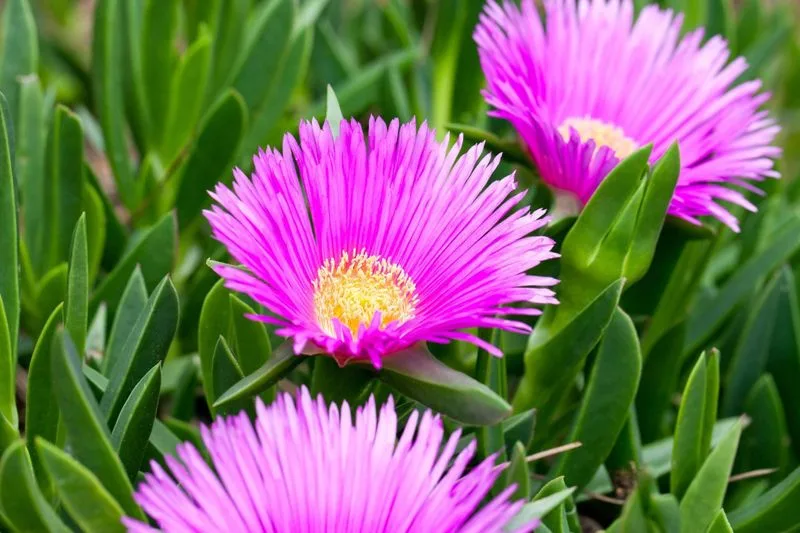
Ice plants are low-growing succulents with vibrant flowers that resemble jewels. Originating from South Africa, these plants are perfect for dry, sandy soils. Ice plants require minimal watering, thriving on rainfall alone. They spread quickly, creating a colorful ground cover that is both attractive and easy to manage. Ice plants are ideal for coastal gardens or sunny slopes, adding a splash of color with little effort. Their drought resistance and vibrant blooms make them a favorite for water-wise gardens.
Lamb’s Ear
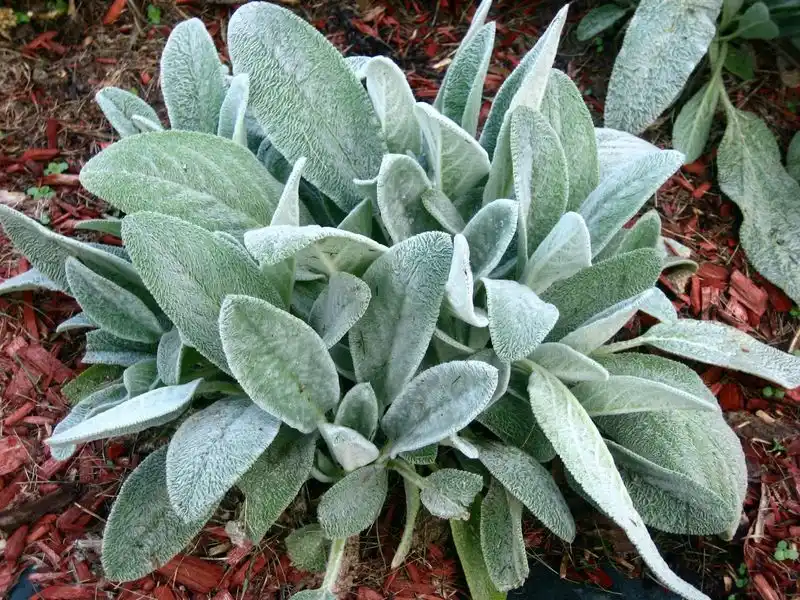
Lamb’s Ear is known for its velvety, silver leaves that add a soft texture to gardens. This perennial thrives in sunny, dry locations, requiring minimal watering once established. Lamb’s Ear’s unique foliage is both visually appealing and functional, as it acts as a natural mulch. This plant is perfect for borders or as a ground cover, offering year-round interest. Its drought tolerance and easy maintenance make Lamb’s Ear a valuable addition to any garden.
Hens and Chicks
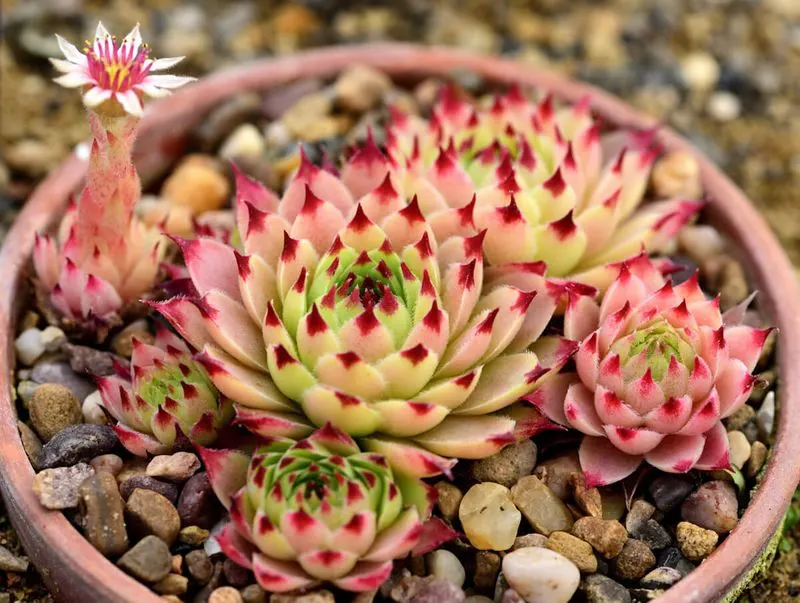
Hens and chicks, or sempervivums, are charming succulents that multiply effortlessly. Their rosette formations add visual intrigue to rock gardens and containers. These hardy plants thrive on neglect, requiring little more than rainwater to flourish. Hens and chicks are perfect for sunny, well-drained spots, offering a low-maintenance option for garden enthusiasts. Their ability to withstand harsh conditions makes them a reliable choice for those seeking a hands-off gardening experience.
Milkweed
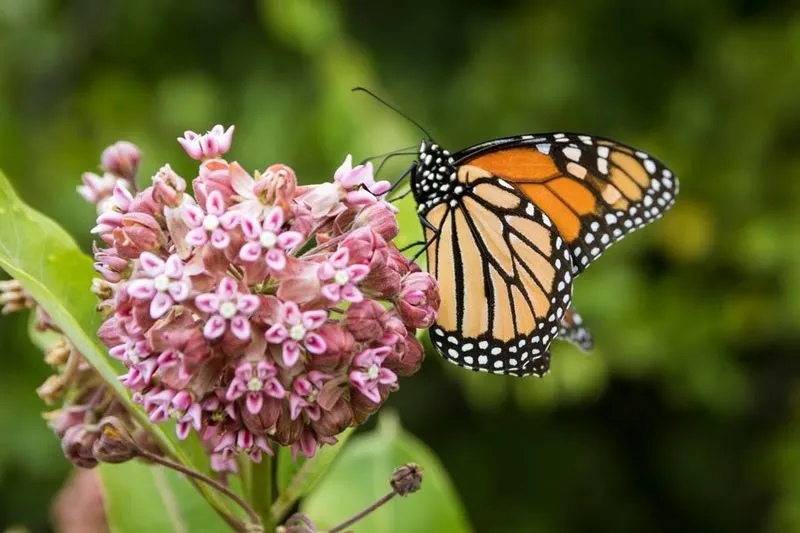
Milkweed is not only a beautiful addition to gardens but also an essential plant for monarch butterflies. This perennial thrives in sunny locations and requires minimal water once established. Its clusters of pink or orange flowers provide nectar for a variety of pollinators. Milkweed’s hardy nature makes it a low-maintenance choice for gardeners, offering ecological benefits with minimal effort. Plant it to support butterfly populations and enjoy a vibrant, wildlife-friendly garden.
Yucca
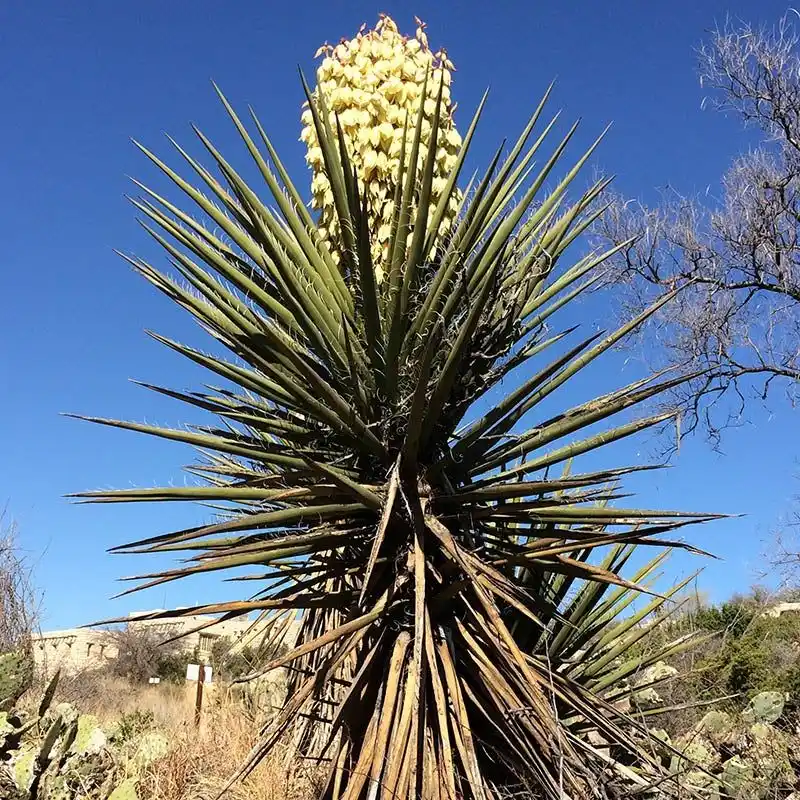
Yucca plants are iconic in arid landscapes, known for their sword-like leaves and towering flower stalks. These hardy perennials thrive in full sun, needing little more than rainwater to flourish. Yuccas add dramatic flair to gardens, offering architectural interest with minimal care. They are perfect for xeriscaping or as focal points in desert-themed gardens. Yucca’s drought resistance and striking appearance make it a popular choice for those seeking low-maintenance, visually stunning plants.
Ghost Plant (Graptopetalum paraguayense)
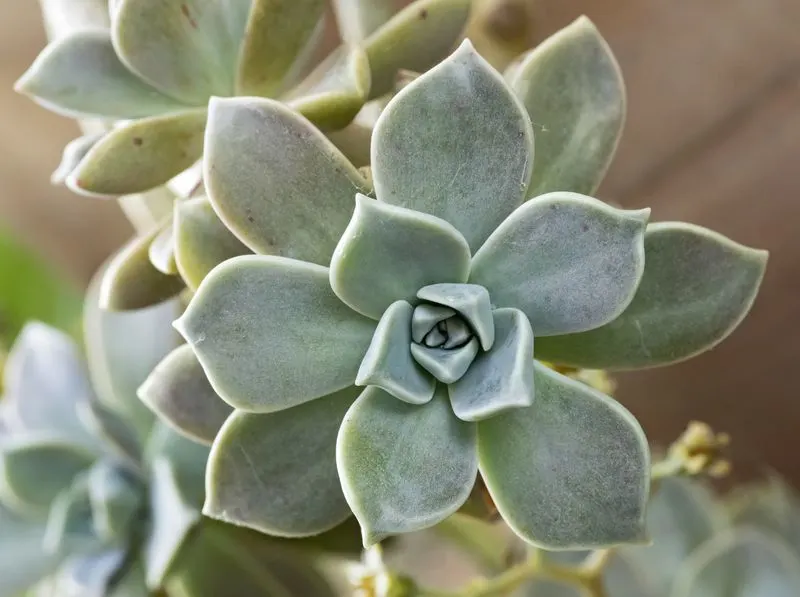
Ghost Plant, whimsically named for its ethereal appearance, is a succulent with fleshy, blue-grey leaves arranged in a captivating rosette pattern. These leaves can take on a pinkish hue under adequate sunlight, adding an unexpected twist of color. It’s a plant that thrives on neglect, needing only the occasional rainfall to sustain its charm.
Place it in a sunny spot, and watch as it transforms your garden into a low-maintenance oasis. Fun fact: Despite its delicate look, the Ghost Plant is surprisingly hardy, often used in rock gardens and as ground cover.

